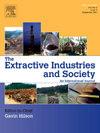中美洲和墨西哥土著社区与采矿活动:系统审查
IF 4.3
2区 社会学
Q2 ENVIRONMENTAL STUDIES
Extractive Industries and Society-An International Journal
Pub Date : 2025-08-18
DOI:10.1016/j.exis.2025.101747
引用次数: 0
摘要
采矿活动对中美洲和墨西哥的土著人民构成越来越大的威胁,因为他们的领土成为日益扩大的采掘利益的焦点。这一系统的文献综述对整个地区的土著社区和采矿作业之间的关系进行了交叉分析。该研究采用了系统性证据综合报告标准(ROSES)方法,分析了2000年至2024年间用英语和西班牙语发表的50篇同行评议文章。这些发现表明,研究集中在危地马拉和墨西哥,特别关注玛雅人(玛姆人、Q’eqchi人、Sipakapense人)和萨波特克人。加拿大矿业公司成为主导角色,尤其是在黄金和白银开采领域。研究领域围绕着一系列相互关联的主题,重点是冲突和抵抗、暴力和刑事定罪、殖民遗产和剥夺、土著本体论以及采掘活动的社会环境影响。报告强调有必要推进采掘后过渡、企业社会责任战略和对性别问题敏感的方法等方面的研究。它还倡导使用与土著社区共同开发的参与性方法,并强调将地理覆盖范围扩大到巴拿马和尼加拉瓜等未充分开发的情况的重要性。本文章由计算机程序翻译,如有差异,请以英文原文为准。
Indigenous communities and mining activities in Central America and Mexico: A systematic review
Mining activities pose an increasing threat to Indigenous peoples in Central America and Mexico, as their territories become the focus of expanding extractive interests. This systematic literature review provides a cross-cutting analysis of the relationships between Indigenous communities and mining operations across the region. Drawing on the ROSES (Reporting Standards for Systematic Evidence Syntheses) methodology, it analyzes 50 peer-reviewed articles published in English and Spanish between 2000 and 2024. The findings reveal a strong concentration of studies centered on Guatemala and Mexico, with particular attention to the Maya (Mam, Q’eqchi’, Sipakapense) and Zapotec peoples. Canadian mining companies emerge as the dominant actors, especially in gold and silver extraction. The research field is structured around a diverse set of interrelated themes, with significant emphasis on conflicts and resistance, violence and criminalization, colonial legacies and dispossession, Indigenous ontologies, and the socio-environmental impacts of extractivism. The review underscores the need to advance research on post-extractive transitions, corporate social responsibility (CSR) strategies, and gender-sensitive approaches. It also advocates for the use of participatory methodologies co-developed with Indigenous communities and highlights the importance of expanding geographical coverage to underexplored contexts such as Panama and Nicaragua.
求助全文
通过发布文献求助,成功后即可免费获取论文全文。
去求助
来源期刊

Extractive Industries and Society-An International Journal
ENVIRONMENTAL STUDIES-
CiteScore
6.60
自引率
19.40%
发文量
135
 求助内容:
求助内容: 应助结果提醒方式:
应助结果提醒方式:


